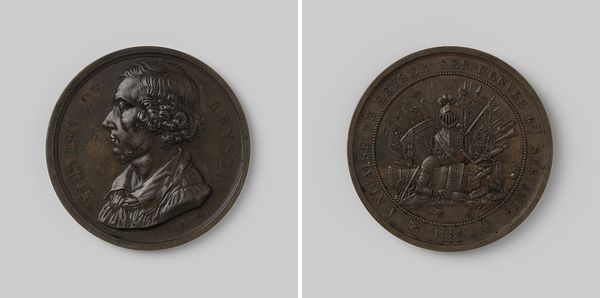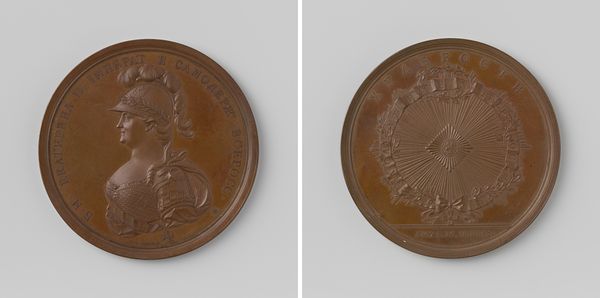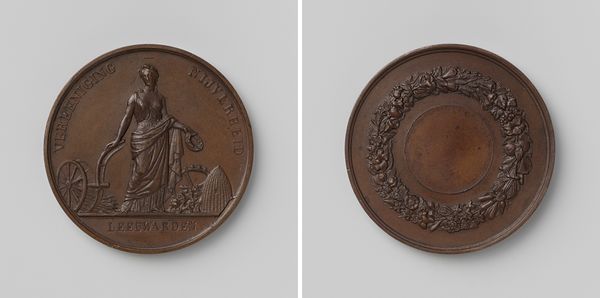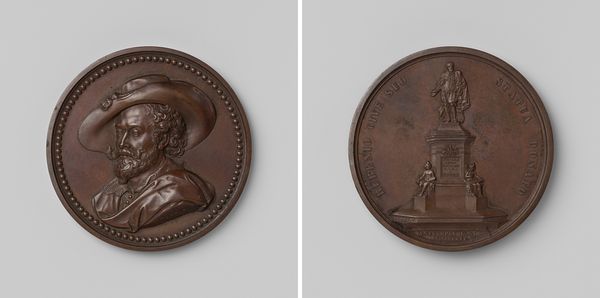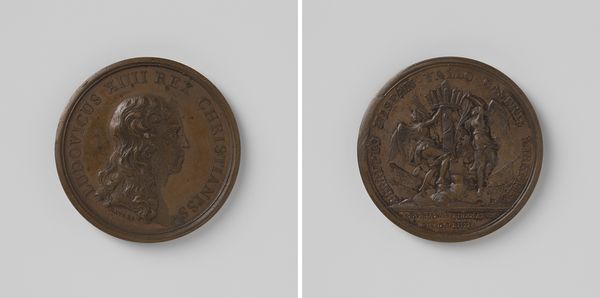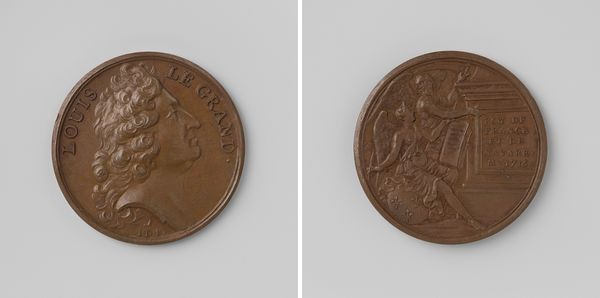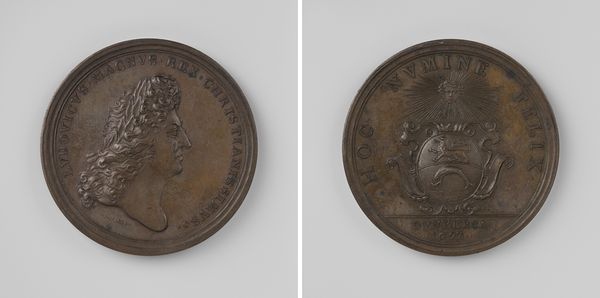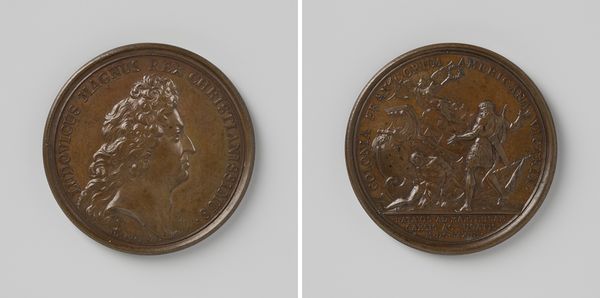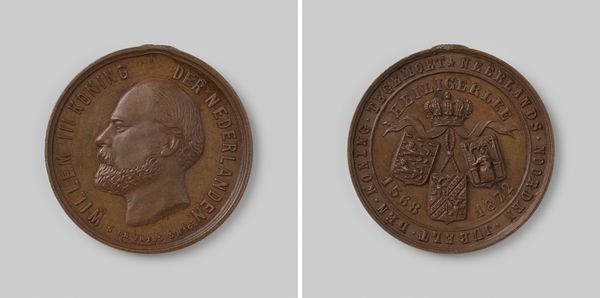
metal, relief, bronze, sculpture
#
portrait
#
baroque
#
metal
#
relief
#
bronze
#
sculpture
#
history-painting
Dimensions: length 6.9 cm, width 6 cm, weight 105.15 gr
Copyright: Rijks Museum: Open Domain
Editor: This is a bronze relief sculpture by Philipp Christoph Becker, titled "Karel VI gekozen tot Duits keizer," made in 1711. It seems to capture a significant historical moment. I am intrigued by its formality. How do you read this work? Curator: This baroque medal presents us with far more than just a portrait of an emperor. We see the visualization of power, embedded in a historical moment, sculpted through a lens of political legitimization. Consider the historical context: Charles VI's claim to power wasn't without contestation, making symbolic affirmation essential. Editor: So, the image isn’t just a representation but an argument? Curator: Exactly. Notice how Charles is depicted in armour, not just as a ruler but as a protector, a warrior. The inscription surrounding his effigy isn't merely descriptive. It proclaims his virtues and achievements. What statement does the reverse of the medal seem to make? Editor: The back with the Latin inscription "Constantia et Fortitudine" suggests steadfastness and courage. But, isn't that what all rulers wanted to project? Curator: Absolutely. But consider it in the frame of the early 18th century, a period marked by power struggles and shifting alliances. Becker’s artwork, thus, transcends mere celebration, acting as a crucial piece in shaping a political narrative. Editor: That's fascinating. It shows how art could act as propaganda. It is interesting how this little object condenses such complicated and critical statements! Curator: Precisely. Analyzing art like this medal urges us to question the role of art in influencing and cementing societal power structures. It is all there embedded in the relief and lettering.
Comments
No comments
Be the first to comment and join the conversation on the ultimate creative platform.

